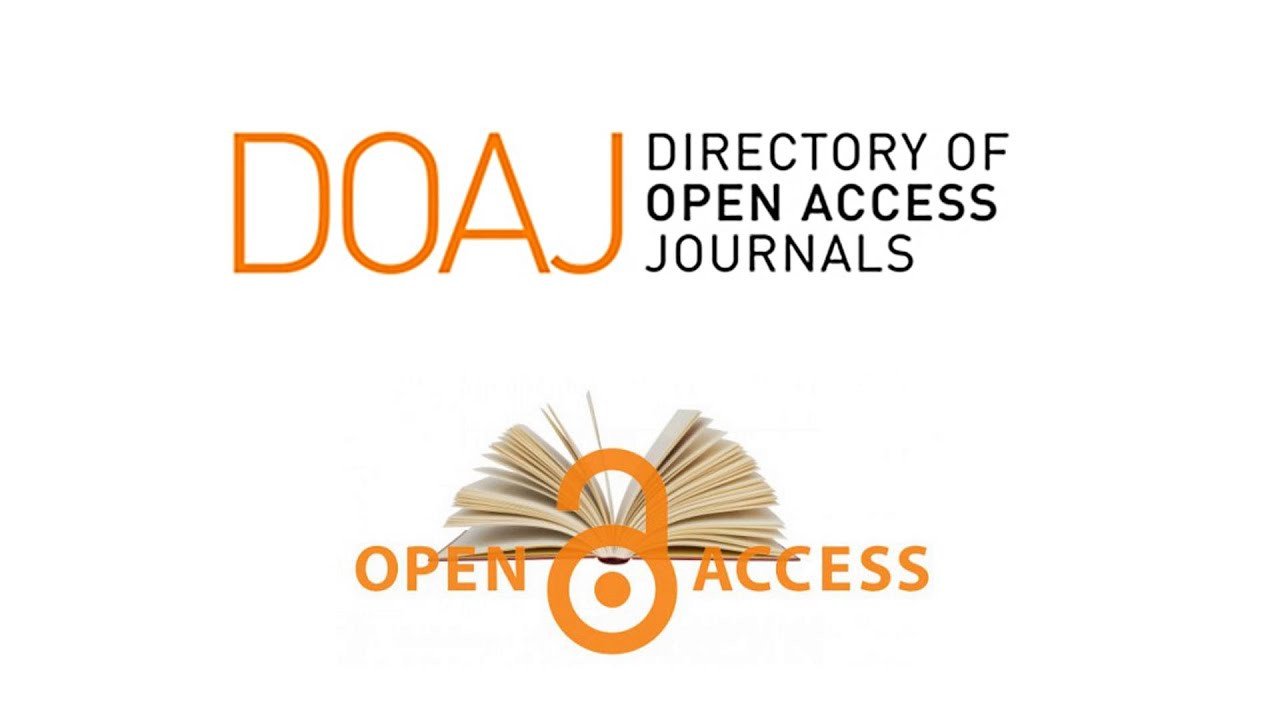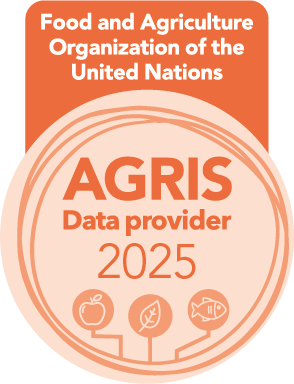Distribution and Abundance of Copepoda in Shatt Al-Basrah Channel, Southern Iraq
DOI:
https://doi.org/10.58629/ijaq.v22i1.674Keywords:
Zooplankton, Shatt Al-Basrah, CopepodaAbstract
The ecology and structure of Copepoda community have been studied in two stations (S1, S2) at Shatt Al-Basrah channel: S1 was upstream the dam and S2 was down of the dam. Zooplankton samples were collected monthly for one year during the period from December 2011 until November 2012 by using Plankton net with 85 µm mesh size and 30 cm mouth aperture, by the vertical collection method. Eighteen species of copepods belonging to 15 genera were identified in the study area. In S1, there were 13 species belonging to 13 genera. However, 15 species belonging to 13 genera were recorded in S2. It was observed that the Order Calanoida was dominant in the two study areas, including 11 species, belonging to nine genera, followed by the Order Harpacticoida, which includes four species belonging to four genera, then the Order Cyclopoida, which is represented by three species belonging to two genera. The highest density of Copepoda reached 20283 ind./m3 in S2 during May 2012, whereas they disappeared in December, January, and March in S1.
Metrics
References
Abbas, M.F. (2010). Abundance and Diversity of Cladocera and some other zooplankton in the Northern part of Shatt AL-Arab River. M. Sc. Thesis, Coll. Educ. Univ. Basrah.118pp.
Abdul-Amir, S. and Sadkhan, A.M. (2011). Shatt Al-Basrah Canal, a field study. Basra Studies J. Issue 12: 288-331.
Abowei, J.F.N. (2010). Salinity, Dissolved Oxygen, pH and Surface water Temperature Conditions in Nkoro River, Niger Delta, Nigeria, Adv. J. Food. Sci. Technol., 2(1): 36–40. https://maxwellsci.com/print/ajfst/v2-36-40.pdf.
Ahmed, H.K. and Ghazi, A.H. (2009). A taxonomical and environmental study of genus Brachionus (Rotifera: Mongononta) (Pallas, 1776) in Al-Hammer marsh, south of Iraq. Iraqi J. Aqualt., 6(2): 105-112. DOI: https://doi.org/10.58629/ijaq.v7i2.265.
Ajeel, S.G. (1990). Study of the ecology and biology of some important species of marine Copepoda in the North West Arabian Gulf. M. Sc. Thesis, Univ. Basrah. pp.149. (In Arabic).
Ajeel, S.G. (2012). Distribution and abundance of zooplankton in Shatt Al-Basrah and Khour Al-Zubair Channels, Basrah, Iraq. J. Bas. Res. Sci., 38(4): 10-28 pp. https://un.uobasrah.edu.iq/papers/4132.pdf.
Ajeel, S.G.; Ali, M.H. and Salman, S.D. (2001). Cladocera from Shatt Al-Arab and some temporary ponds in Basrah. Mar. Mesop. 16(1): 309-329. (In Arabic). https://faculty.uobasrah.edu.iq/uploads/publications/1646735228.pdf.
Ajeel, S.G.; Ali, M.H. and Salman, S.D. (2004). Oxygen consumption of Simocephalus vetulus (Muller) (Crustacea: Cladocera) in Basrah. Iraqi J. Aquacult., 2: 145-162. (In Arabic).
Ajeel, S.G. (2017). Zooplankton of Iraqi Marine Water North West Arabian Gulf. Int. J. Mar. Sci., Vol. 7(8): 67-75. DOI: 10.5376/ijms.2017.07.0008.
Al-Handhal, A.Y.; Mohamed, A.R.M. and Abdullah, D.S. (1992). Phytoplankton production and related ecological factors in the Shatt Al-Basrah canal, South Iraq, Mar. Mesop., 7(1): 35–48. https://www.researchgate.net/publication/309346930.
Al-Jizany, H.R.I. (2005). Organic pollution and its effect in diversity and abundance of plankton in the Shatt Al-Arab, Ashar and Rubat canals. M. Sc. Thesis, Coll. Edu. Uni. Basrah.82pp.
Al-Khabbaz, M. and Fahmi, A.M. (1998). Distribution of Copepoda in the ROPME Sea Area 1994. Offshore Environment of ROPME Sea Area, after the war–related oil spill, Eds. A. Ostsuki et al., 303–318.
Al-Lami, A.A. (1998). The environmental effects of Al-Thirthar arm on the Tigris River before entering the Baghdad city. PhD thesis - Al-Mustansiriya Univ. Coll. Sci. 123 p. (In Arabic).
Al-Rawi, K.M. and Khalaf Allah, A.M. (1980). Design and analysis of agricultural experiments. Printing Press, Directorate of Dar Al-Kutub for Printing and Publishing, University of Mosul: 488 p. (In Arabic).
Al-Robaei, M.A.J. (1997). Environmental study of the Al-Azaam River and its impact on the Tigris River. M. Sc. Thesis, Univ. Baghdad. (In Arabic).
Al-Saadi, H.A.; Al-Dahham, N.Q. and Al-Hassan, L.A. (1986). Hydrology. Directorate of Books and Publishing - Basra University. 538.
Al-Saadi, H.A.; AL-Mousawi, A.H. and AL-Aarijy, M.J. (1993). Physicochemical features of AL- Hammar Marsh, Iraq. J. Coll. Educ. Women, Univ. Baghdad, 4: 35-40.
Al-Saboonchi, A.A.; Barak, N.A. and Mohamed, A.M. (1986). Zooplankton of Garmma marshes. Iraq J. Biol. Sci. Res., 17(1): 33–40.
Al-Shawi, I.J.M. (2010). Ecological and taxanomical studies to planktons in Khour Al-Zubair lagoon with determination of the total petroleum hydrocarbons levels. Ph.D. thesis, Coll. Agri. Basrah Uni.: 157p. (In Arabic).
Al-Yamani, F.Y.; Al-Rifaie, K.; Al-Mutair, H. and Ismail, W. (1998). Post-Spill spatial distribution of zooplankton in ROPME sea area, Terra scientific publishing company (TERRAPUB). Tokyo: 193–2002.
Al-Yamani, F.Y. and Prusova, I. (2003). Common Copepods of the North-West Arabian Gulf, Identification Guide. Kuwait Institute for Scientific Research: 162.
Al-Yamani, F.Y.; Skryabin, V.; Gubanova, A.; Khvorov, S. and Prusova, I. (2011). Marine zooplankton practical guide. Kuwait Inst. Sci. Res. V2: 197.
Al-Zubaidi, A.M.H. (1998). Distribution and abundance of zooplankton in the Shatt Al-Arab Estuary and North-West Arabian Gulf. Ph.D. Thesis. Basrah Univ. 199 p.
Antione, S.E. (1983). Limnological investigation in the polluted Rabat canal and the Shatt AL-Arab River, Basrah (Iraq). Verh. Int.: Limnol 20: 1552–1556.
Camacho, F.G.; Rodriguez, J.G.; Miron, A.S.; CeronGarcia, M.C.; Belarbi, E.H.; Chisti, Y. and Grima, E.M. (2007). Biotechnological signification of toxic marine dinoflagellates. Biotechnology advances, 25: 176-194. https://doi.org/10.1016/j.biotechadv.2006.11.008.
Clark, J.R. (1996). Coastal zone management handbook. London: Lew is publishers.
Dahms, H.U.; Tseng, L.S.; Hsiao, S.H.; Chen, Q.C.; Kim, P.R. and Hwang, J.S. (2012). Biodiversity of planktonic copepods in the Lanyang River (Northeastern Taiwan), a typical watershed of Oceania. Zoological studies, 51(2): 160–174.
Ehlinger, G.S. and Tankersley, R.A. (2004). Survival and development of horseshoe crab (Limulus polyphemus) embryo and larvae in hypersaline conditions–Biol. Bull. 206: 87–94. DOI: 10.2307/1543539.
Evans, R. R. and Ryan, S. J. (2010). Distribution and environment influences on freshwater gastropods from lotic systems and springu in pennsylvani USA, with conservation recommendations. Ames Malac. Bull. 28: 135-150. DOI: 10.4003/006.028.0207.
Grzesiuk, M. and Mikulski, A. (2006). The effect of salinity on fresh water crustaceans. Pol. J. Ecol., 54 (4): 669–674.
Guy, D. (1992). The ecology of the fish pond ecosystem with special reference to Africa. Pergamon press Inc, New York, 220–230.
Gurney, R. (1921). Fresh water crustacean collected by Dr. P. A. Buxton in Mesopotamia and Persia. Bombay Nat. Hist. Soc. 27: 835-843.
Halse, S.A.; Shiel R.J. and Williams W.D. (1998). Aquatic invertebrates of Lake Gregory, north Western Australia, in relation to salinity and ionic composition. Hydrobiologia. 381: 15-29. DOI: 10.1023/A:1003263105122.
Hammadi, N.S. (2010). An Ecological study of the Rotifera of Shatt Al-Arab region. Ph.D. thesis. Agricul. Coll., Basrah Univ. 351pp.
Hassan, F.M. (1997). A limnological study on Hilla River. Al-mustansiriyah J. Sci., 8(1): 22-30. https://www.researchgate.net/publication/285354078.
Irigoien, X.; Harris, R.P.; Verheye, H.M.; Joly, P.; Runge, J.; Star, M.; Pond, D.; Camphell, R.; Shreeve, R.; Ward, P.; Smith, A.N.; Dam, H.G.; Peterson, W. and Davidson, R. (2002). Copepod hatching success in marine ecosystem with high diatoms concentration. Nature, 419: 289-387. https://doi.org/10.1038/nature01055.
Jeppesen, M.; SØndergaard, M. ; Kanstrup, E. ; Petersen, B. ; Eriksen, R.B. ; Hammershoj, M. ; Mortensen, E. ; Jensen, J.P. and Have, A. (1994). Does the impact of nutrients on the biological structure and function of brackish and freshwater lakes differ? – Hydrobiologia, 275/276: 15–30. https://doi.org/10.1007/BF00026696.
Khalaf, T. A. (1988). Calanoid copepod of Iraqi water of the Arabian Gulf. Systematic account І. Calanoida, families Calanoidae through Temoridae. Mar. Mesop., 3(2): 173– 207.
Khalaf, T. A. (1991). A new Calanoid Copepoda of the Genus Acartia from Khour-Abdulla and Khour Al-Zubair waters, Iraq. Mar. Mesop., 6(1): 80–91.
Khalaf, T. A. (1992). Three Calanoid copepods new to the Arabian Gulf. Mar. Mesop., 7(2): 263–274.
Khalaf, T. A. (2007). Post-Naupliar Stages of Acartia (Acartiella) faoensis, Khalaf (Copepoda: Calanoida), from Khour Al-Zubair South of Iraq, Inter. J. of Oceans and Oceano. 2(1): 179–186. DOI: 10.21276/ijaq.2006.3.2.1
Khalaf, T. A. (2008a). A new species of phyllodiaptomus Kiefer (Copepoda, Calanoida) from the Shatt Al-Arab River, Southern Iraq. Cructaceana, 81(3): 257–269.
Khalaf, T. A. (2008b). A new record of Bestiolina Arabica Ali et al., 2007 (Calanoida, Copepoda) from Khour Al-Zubair canal and Shatt Al-Arab River Southern Iraq. Mar. Mesop., 23(2): 377–386.
Khalaf, T. A. and Ajeel, S.G. (1994). Study of marine zooplankton NW Arabian Gulf, distribution and abundance. Mar. Mesop. 9(2): 397-424.
Kleppel, G.S.; Holliday, D.V. and Pieper, R.E. (1991). Tropic interaction between copepods and micoplankton. A question about the role of diatoms. Limnol. Oceanogr., 172–178. https://doi.org/10.4319/lo.1991.36.1.0172.
Kulkarni, D. A. and Surwase, S. S. (2013). Studies on occurrence, richness and composition of zooplankton in seena river water at, Mohal, Dist–solapur, MS, India. Int. Res. J. Biological sci., 2(2): 25–28.
Margalef, R. (1968). Perspectives in ecology theory. Univ. Chicago press, Chicago .111. Cited by Nash, R. D. M. and Gibson R. N. 1982.
Mehra, N.K. (1986). Studies on primary production in a sub–tropical Lake. Comparison between experimental and predicated values. Indian J. Exp. Biol., 24: 189–192.
Michel, H.B.; Behbehan, M.; Herring, D.; Mrar, M.; Shoushani, M. and Brakoniecki, T. (1986). Zooplankton diversity, distribution and abundance in Kuwait waters. Kuwait Bulletin of Marine Science, 8: 37–105.
Morad, M. S. S. (2011). Abundance and diversity in Iraqi marine coastal and estuary brackish water and their Role as Hosts of Parasites. MSc. Thesis Coll. Educ., Basrah Univ., 118 p.
Nelson, D. J. (1960). Improved chlorophyll extraction methods science, 132–351.
Pielou, E. C. (1977). Mathematical ecology. John wiely New York. 385.
Raymont, J. E. G. (1983). Plankton and productivity in the ocean. 16 Pergamon press Ltd. Oxford. Second Ed. Vol. 2: 809.
Reddy, R. K. M.; Mastan, S.A. and Srilakshmi, D. (2012). Studies on physic-chemical parameters and zooplankton abundance in Kollerru lake, Andhra Pradesh, India. J. Environ. Res. Develop., 7(2): 964–972.
Pesta, O. (1912). Copepoda aus dem Golf von persien. Wissenchaftliche Ergebnisse der Expedition nach mesopotamien Crustacea. Ann. Des. Naturhist. Hofmuseums. Wein. 27: 39-62.
Salman, S. D.; Marina, B.A.; Ali, M.H. and Oshana, V.K. (1986). Zooplankton studies. In final, report the 18. Month marina pollution monitoring and research programming in Iraq. Mar. Sci. Cen. of Basrah Univ. Iraq. 156–166.
Salman, S. D.; Marina, B.A. and Ali, M.H. (1990). The zooplankton of Khour Abdullah, North West Arabian Gulf. Mar. Mesop., 5(1): 11-26.
Sereflisan, H.; Yildirin, M.Z. and Sereflisan, M. (2009). The gastropod fauna and their abundance, and some physico-chemical parameter of Lake Gölbasi (Hatay, Turkey). Turk. J. 2001. 33: 287-296. DOI: 10.3906/zoo-0806-7.
Shannon, C. E. and Weaver, W. (1949). The mathematical theory of communication, Univ. Illinois press, Urbana, I, 11.117 p. Cited by Fausch, K.D., J.D. Lyons; J.R. Karr and Angermeier, P.L. (1990).
Shayesthfar, A.; Noori, N. and Shirazi, F. (2010). Environmental factor effects on the seasonally changes of zooplankton density in Parishan Lake (Khajoo Spring site), Iran . ASIAN J. Exp. Biol. Sci., 1(4): 840–844.
Shivaprasad, A.; Vinita, J.; Revichandrn, C.; Reny, P.D.; Deepak, M.P.; Muraleedharan, K.R. and Kumar, K.R.N. (2013). Seasonal stratification and property distribution in a tropical estuary (Cochin estuary, west coast, India). Hydrol. Earth Syst. Sci., 17: 187–199. https://doi.org/10.5194/hess-17-187-2013.
Stiling, P. (1999). Ecology: theories and application. 3rd ed. 638 pp.
Teschner, M. (1995). Effects of salinity on the life history and fitness of Daphnia magna variability within and between populations – Hydrobiologia, 307: 33–41. DOI: https://doi.org/10.1007/BF00031995.
Ter Braak, C. J. F. (1986). Canonical correspondence analysis: a new eigenvector technique for multivariate direct gradient analysis. Ecology 67: 1167–1179. https://doi.org/10.2307/1938672.
Ter Braak, C.J.F. and Šmilauer P. (2002). CANOCO Reference manual and CanoDraw for Windows User's guide: Software for Canonical Community Ordination (version 4.5). Microcomputer Power. www.canoco.com.https://edepot.wur.nl/405659.
Van Donick, K.; Schon I.; Maes, F.; De Bruyn, L. and Martins, K. (2003). Ecological strategies in the ancient asexual animal group Darwinulidae (Crustacea, Ostracoda). Freshwat. Biol., 48: 1285–1294. https://doi.org/10.1046/j.1365-2427.2003.01078.x.
Vangenechten, J. H. D.; Witters, H. and Vanderborght, O.L.J. (1989). Laboratory studies on invertebrate survival and physiology in aced waters, P 153-169. In aced toxicity and aquatic animals (eds. Morris, R.E.W. Taylor, T.J.A. Brown and J.A. Brown). Cambridge University press, Cambridge.
Vutukuru, S.S.; Asadi, S.S.; Rao, B.V.T.V. and Raju, M.V. (2012). Plankton biodiversity as indicators of the ecological status of river Moosi, Hyderabad, India. Inter. j. Of earth sci. and eng. 5(3)1: 587–592.
Wamada, Y. and Ikeda, T. (1999). Acute toxicity of lowered pH to some oceanic zooplankton. Plankton Biol. Ecol., 46(1): 62–67.
Wasmund, N.; Top, I. and Schories, D. (2006). Optimizing the storage and extraction of chlorophyll samples. Oceanologia, 48(1): 125–144.
Wickstead, J. H. (1965). An introduction to the study of tropical plankton Hutchinson and co (publishers) L T D.; London. pp. 160.
Yamazi, I. (1974). Analysis of the data on temperature, salinity and chemical properties of the surface water, and the zooplankton communities in the Arabian Gulf in December 1968. Trans. Tokyo. Univ. Fish. 1: 26–51.
Yoder, J. A. and Kennelly, M.A. (2003). Seasonal and ENSO variability in global Ocean phytoplankton chlorophyll derived from 4 year of sea Wifs measurement. Global Biogiochemical Cycles, 17 (4): 1112. https://doi.org/10.1029/2002GB001942.
Zheng, Z. (1989). Marine plankton. China Ocean press, Beijing and springervelag; Berlin. 454 pp.
Downloads
Published
How to Cite
Issue
Section
License
Copyright (c) 2025 Iraqi Journal of Aquaculture

This work is licensed under a Creative Commons Attribution 4.0 International License.










